Transregio 360
Quantenmaterie mit eingeschränkten Freiheitsgraden
Weniger ist mehr!
Wir nutzen sorgfältig ausgewählte Einschränkungen um Quantenzustände in Festkörpern zu erschaffen und zu manipulieren. Das Ziel ist es damit neue Quantenmaterialien herzustellen und mehr über Quantenmaterialien zu lernen.
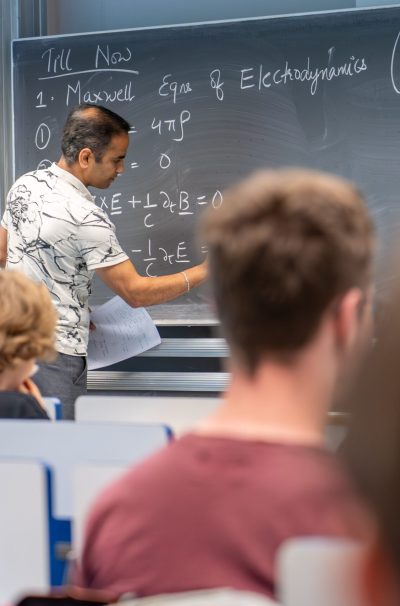

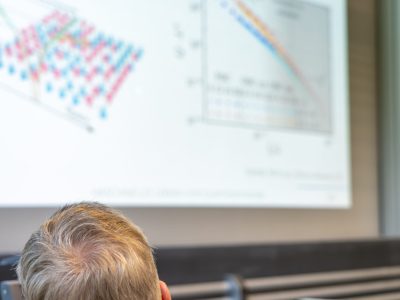
Willst du mehr wissen?
Dann besuche doch unseren Blog und erfahre mehr über das Thema, besuche unsere Veranstaltungen oder entdecke unsere spielerischen Angebote rund um die Quantenwelt! All dies findet ihr auf der Seite unseres Outreach-Projektes.
Neuste Publikationen
Sharma, S.; Chioncel, L.; Marco, I. Di Exploring strong electronic correlations in the breathing kagome metal Fe3Sn Journal Article Phys. Rev. B 111, 235127 (2025). @article{sharma_exploring_2025,Kagome metals have emerged as pivotal materials in condensed matter physics due to their unique geometric arrangement and intriguing electronic properties. Understanding the origin of magnetism in these materials, particularly in iron-rich Fe-Sn binary compounds such as Fe3Sn, holds a significant importance, as they represent potential candidates for permanent magnets with a high Curie temperature and a strong magnetic anisotropy. In the present study, we employ density functional theory and dynamical mean-field theory to analyze the electronic structure and magnetic properties of Fe3Sn. Our investigation reveals the presence of several nearly flat bands and Weyl nodes at low excitation energies. The inclusion of local correlation effects is shown to push these features even closer to the Fermi energy, which may be important for their manipulation via external stimuli. Regarding magnetism, the Hubbard-like interaction leads to an increase of orbital polarization at the expenses of a minor reduction of the spin moment. The magnetic anisotropy energy exhibits a strong dependence on the particular choice of the Coulomb interaction parameters. Additionally, our detailed analysis of the interatomic exchange interactions indicates a significant contribution from the antisymmetric exchange, i.e., the Dzyaloshinskii-Moriya interaction, which showcases the existence of magnetic chirality in the system. Overall, our investigation highlights a strong interplay between the flat bands near the Fermi level, the local Coulomb interaction, and the triangular geometry of the lattice, which plays a crucial role in driving the magnetic properties of this material. |
Prodan, L.; Evans, D. M.; Sukhanov, A. S.; Nikitin, S. E.; Tsirlin, A. A.; Puntigam, L.; Rahn, M. C.; Chioncel, L.; Tsurkan, V.; Kézsmárki, I. Easy-cone state mediating the spin reorientation in the topological kagome magnet Fe3Sn2 Journal Article Phys. Rev. B 111, 184442 (2025). @article{prodan_easy-cone_2025,We investigated temperature-driven spin reorientation (SR) in the itinerant kagome magnet Fe3Sn2 using high-resolution synchrotron x-ray diffraction, neutron diffraction, magnetometry, and magnetic force microscopy (MFM), further supported by phenomenological analysis. Our study reveals a crossover from the state with easy-plane anisotropy to the high-temperature state with uniaxial easy-axis anisotropy taking place between ∼40 and 130 K through an intermediate easy-cone (or tilted spin) state. This state, induced by the interplay between the anisotropy constants 𝐾1 and 𝐾2, is clearly manifested in the thermal evolution of the magnetic structure factor, which reveals a gradual change of the SR angle 𝜃 between 40 and 130 K. We also found that the SR is accompanied by a magnetoelastic effect. Zero-field MFM images across the SR range show a transformation in surface magnetic patterns from a dendritic structure at 120 K to domain-wall-dominated MFM contrast at 40 K. Our analysis suggests that the SR and associated microstructural transformations are the results of competing first- and second-order anisotropy constants. |
Sakrikar, P.; Shen, B.; Poldi, Eduardo H. T.; Bahrami, F.; Hu, X.; Kenney, E. M.; Wang, Q.; Fruhling, K. W.; Wang, C.; Gupta, R.; Khasanov, R.; Luetkens, H.; Calder, S. A.; Aczel, A. A.; Fabbris, G.; Hemley, R. J.; Plumb, K. W.; Ran, Y.; Gegenwart, P.; Tsirlin, A. A.; Haskel, D.; Graf, M. J.; Tafti, F. Pressure tuning of competing interactions on a honeycomb lattice Journal Article Nat. Commun. 16, 4712 (2025). @article{sakrikar_pressure_2025,Exchange interactions are mediated via orbital overlaps across chemical bonds. Thus, modifying the bond angles by physical pressure or strain can tune the relative strength of competing interactions. Here we present a remarkable case of such tuning between the Heisenberg (J) and Kitaev (K) exchange, which respectively establish magnetically ordered and spin liquid phases on a honeycomb lattice. We observe a rapid suppression of the Néel temperature (TN) with pressure in Ag3LiRh2O6, a spin-1/2 honeycomb lattice with both J and K couplings. Using a combined analysis of x-ray data and first-principles calculations, we find that pressure modifies the bond angles in a way that increases the ∣K/J∣ ratio and thereby suppresses TN. Consistent with this picture, we observe a spontaneous onset of muon spin relaxation (μSR) oscillations below TN at low pressure, whereas in the high pressure phase, oscillations appear only when T < TN/2. Unlike other candidate Kitaev materials, Ag3LiRh2O6is tuned toward a quantum critical point by pressure while avoiding a structural dimerization in the relevant pressure range. |
Eindrücke von vergangenen Veranstaltungen
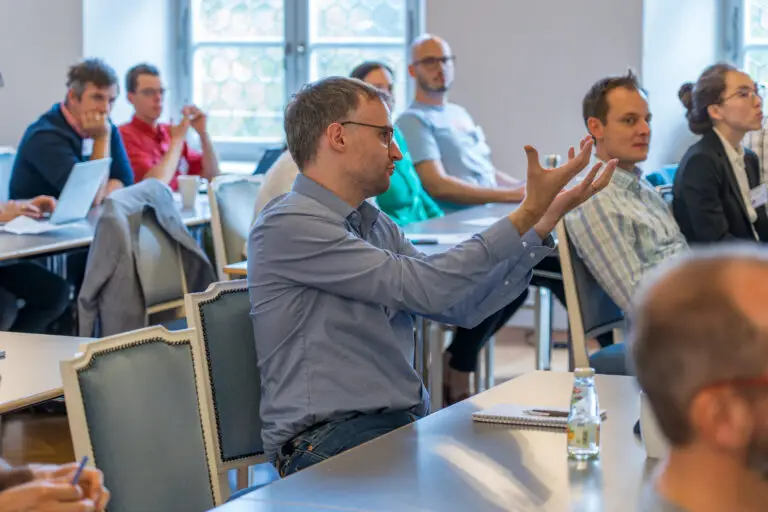




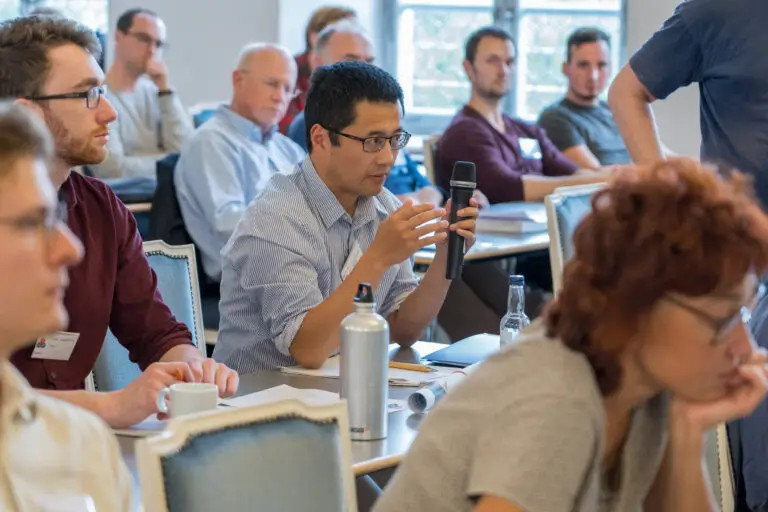




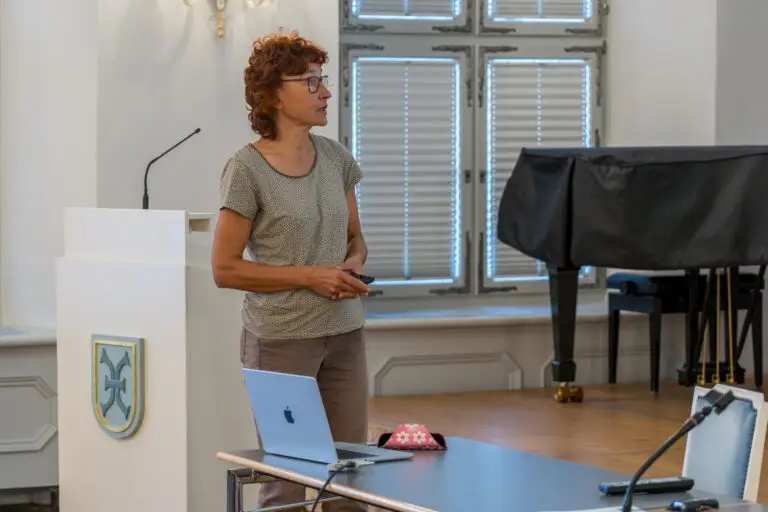
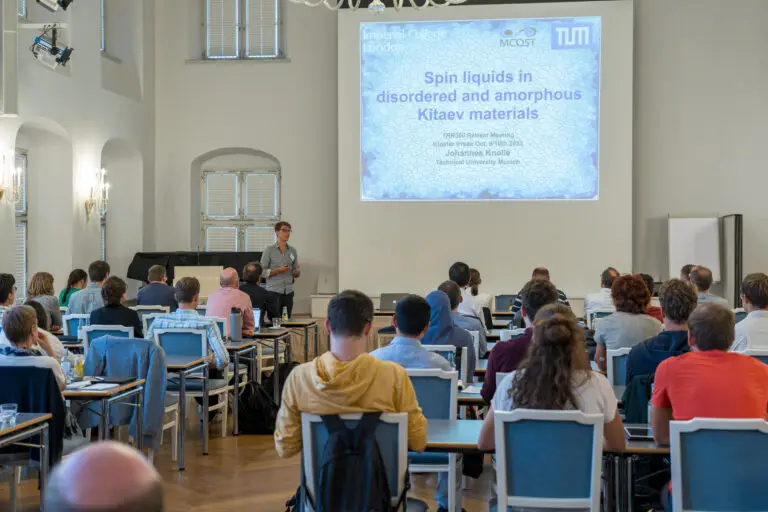

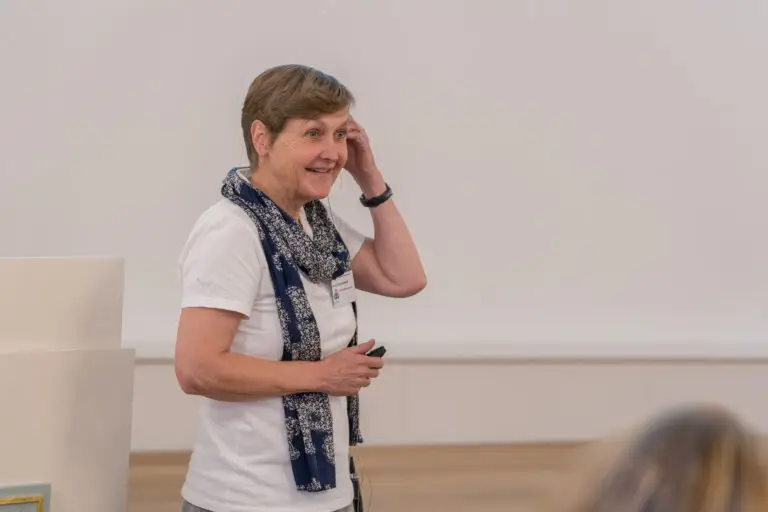

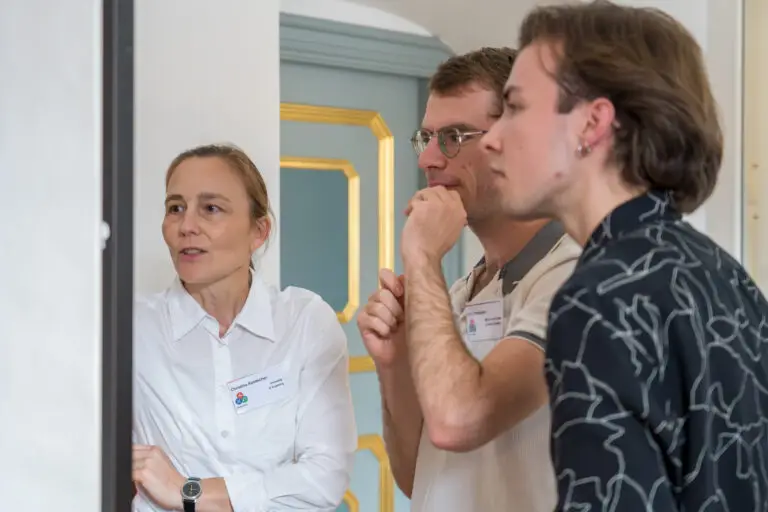





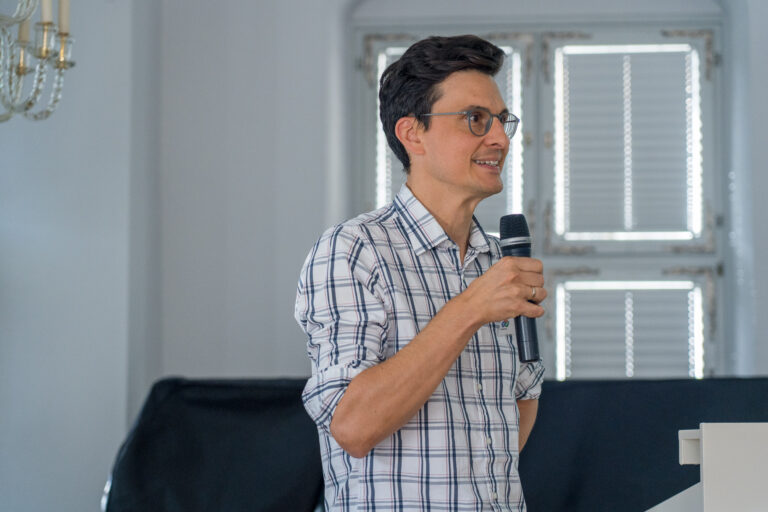
Unsere Mission
Willst du genauer verstehen, was das Ziel des TRR360 ist? Hier wird die Forschung anschaulich für Nichtphysiker erklärt.
das TRR360-Team
Lerne die Gesichter hinter dem TRR360 kennen und finde heraus welche Einrichtungen sich an diesem großen Forschungsprojekt beteiligen! (nur auf Englisch)
Outreach - Öffentlichkeitsarbeit
Es gibt viele Angebote, um die Forschung aus dem Projekt ConQuMat der Öffentlichkeit zugänglich zu machen. Egal ob durch einen Blog, Spiele oder Erlebnisveranstaltungen – tauchen Sie mit uns in die faszinierende Welt der Quantenmaterie ein!
